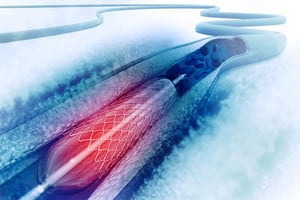How Do Flow Measurements Help Cardiothoracic Surgeons?

“Not a day goes by when this flowmeter doesn’t solve a problem for me.” - BP Mindich, MD
During coronary artery bypass grafting (CABG), Transonic Flowmeters are used to measure the flow of blood through newly anastomosed bypass grafts.
How do flow measurements help cardiothoracic surgeons? Once a bypass graft is sewn into the coronary artery distal to its blockage, a Transonic Flowprobe is simply slipped around the vessel. Within seconds the mean blood flow through the graft is displayed on the flow monitor in mL/min. Also displayed are waveforms of the flowing blood, providing more information about a graft’s status. The pitch of FlowSound also tells surgeons the amount of flow without having to remove their eyes from the surgical field. If it is worth taking hours to complete coronary artery bypass grafting, then it is worth taking a few minutes to measure flow in the graft to make sure it hasn’t been compromised.
You don’t have to rely on guesswork or subjective impressions to assess whether the surgery is successful. If flows are lower than expected, perhaps due a stitch catching on the back wall, it can be corrected on the spot. Measuring flow can save the day. Actual graft blood flow is known before a patient leaves the OR and outcomes improve.




